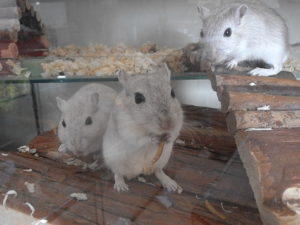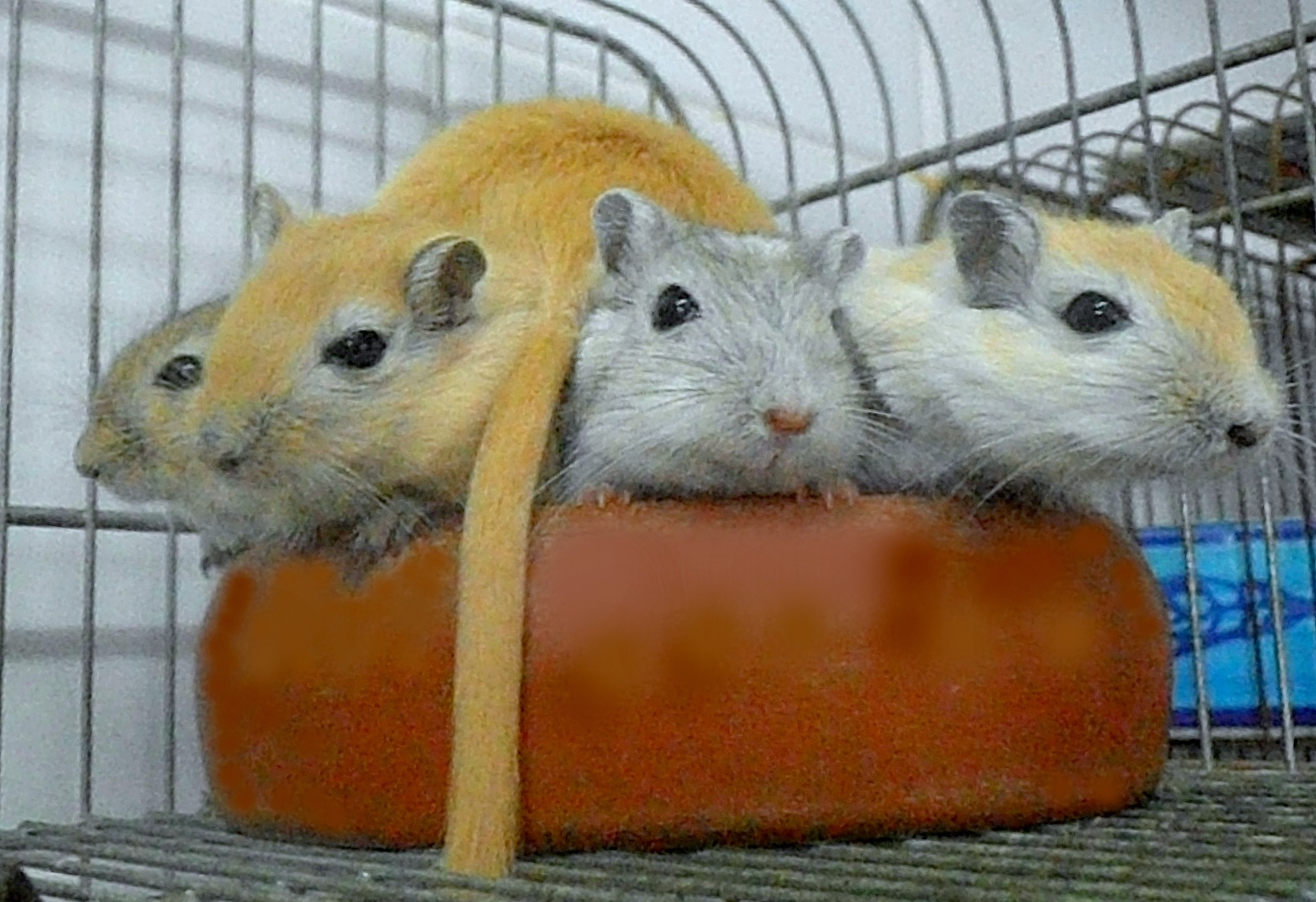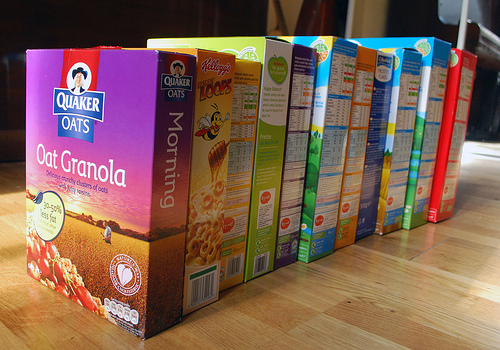Definition: An adorably cute fluffy thing with large back legs and a long tufted tail which takes delight in;
a) chewing EVERYTHING to pieces,
b) kicking their bedding all over the place all the time,
c) starting to bang a piece of wood against the side of their tank when their owners are at a crucial part of a movie or just settling down to get to sleep.

So what is a gerbil in laymens terms?
Most of the time when people refer to ‘gerbils’ they are talking about the Mongolian Gerbil (Meriones unguiculatus). It is actually called a Mongolian or Clawed Jird and belongs to the genus that includes 16 other jirds – including Shaw’s Jirds, Persian Jirds and Kings Jirds, which are larger versions of our standard gerbil and are nearly all available as pets – but Mongolian Gerbils are the only ones with such a wide variety of such wonderful colours.
Anyway, back on track, they are very friendly critters who do very well when living in settled groups – or clans – and absolutely love tunnelling and digging and chewing. As such, they do very well in a tank or other enclosure that has a deep solid base to support all their tunnels and to hold in all their mess (it can be a lot of mess).
Many people add a cage or ‘topper’ to this enclosed base for ventilation and a platform on which to place their food, wheel and other treats and toys – and for many – the only place where they get to see and stroke their gerbil (otherwise you have to dig them out of their deep bedding every time which can be very messy).
Most gerbils are easy to hand tame and will often respond to you opening their tank or cage looking for a treat or to come out for a run. If you get really confident gerbils it almost seems like they are responding to you calling their name…
Totally reinforcing their cuteness.

Gerbil Care Top Tips – Before you get your gerbils – read this:
It isn’t as simple as picking out a gerbil the colour you like – then buying a cage and bedding that has a picture of a gerbil on the front from your local store – it is about understanding a gerbils needs and getting things right from the start.
Here are 6 quick gerbil top tips that could save you a whole lot of effort (and sometimes money) when buying your gerbils of the bat. Always have the following in mind with every purchase:
Gerbils live in clans – a pair or group of gerbils living together with one boss. Always home more than one young gerbil at a time if they are already together to start your own clan and avoid leaving a single gerbil alone after taking yours out of the family nest (you will be making it clan-less). Try very hard to avoid splitting adult clans up (as you won’t know who is friends with who or who the boss was) and certainly avoid mixing adult clans together (two bosses never make a clan).
Single gerbils can get new friends – you just need to use a split tank for safety. Gerbils can get new friends if they are alone – but you can’t just stick two adult gerbils together – they will virtually always fight. You need to build up their trust in each other through their scent-marking so they can decide who is boss safely – and this is what a split tank does. Gerbils act like adults from around 8-12 weeks old, so basically all gerbils need a split tank introduction.
Gerbils can de-clan – which means they have a nasty fight. Gerbil clans are precariously balanced depending on their members and who is boss. Any change to the members of your existing clan (age or health related) or to the clan itself (new gerbils added, gerbils removed, smell of different gerbils on toys or houses) can often have disastrous effects. Don’t mix existing clans of gerbils with others or chop and change gerbils around.
Gerbils like to dig and chew – a mean machine that never stops. Avoid shallow or all-wire cages for gerbils as they will kick all their bedding out all the time, not be able to form natural burrows and no doubt chew in the bars all the time. If there is any plastic in or surrounding your cage it can (and probably will) be easily destroyed – sometimes overnight = escaping gerbils. And in plastic-bottomed cages and tanks – you can hear them dig (all night). In glass tanks or glass-bottomed cages – their digging is silent. Gerbil need around 10 gallons each – and handily – second-hand glass tanks can often be cheaper than brand new sparkly cages of a smaller size…
Gerbils are messy – they don’t like order. If you want a pet who leaves all the bedding exactly where you put it after cleaning out and can be trusted with personal belongings, curtains and bed sheets – you have picked the wrong pet. Within minutes of turning your back, your lovely colour-coded bedding sections have been dishevelled and your strawberry-shaped wicker house destroyed…
Gerbils love cardboard – and can gnaw through solid wood. When buying homes, houses, tunnels and toys for your gerbils – please calculate fun had by overall cost before purchasing. Expect everything to be investigated and chewed to varying extents depending on your gerbil’s fancy. Nothing is safe – but then that is half the fun surely? Also make sure you have a wide circle of friends that can constantly bring you fresh cardboard for the next 3-4 years…

